iStudy for Success!
Online learning tutorials for essential college skills.
Academic Integrity, Plagiarism, and Copyright
PLEASE NOTE: This instructional tutorial is not and should not be considered legal advice. If you are having a problem with an academic integrity issue, copyright issue, or plagiarism issue, you should consult the appropriate administrative or legal authorities immediately.
iStudy would like to acknowledge Yvonne Gaudelius, Karen Faldbaum, and Dawn Amsberry for revising this tutorial's content.
Purpose
 Academic integrity affects everyone at Penn State, whether you are a student, a professor, an instructor, or a staff member. It is everyone's responsibility to know what the Penn State policy on Academic Integrity says. Every member of the Penn State community is also expected to understand what plagiarism is as well as current copyright laws and how they apply to each person's work. This tutorial provides an introduction to academic integrity, plagiarism, and copyright, and additional resources for obtaining more information.
Academic integrity affects everyone at Penn State, whether you are a student, a professor, an instructor, or a staff member. It is everyone's responsibility to know what the Penn State policy on Academic Integrity says. Every member of the Penn State community is also expected to understand what plagiarism is as well as current copyright laws and how they apply to each person's work. This tutorial provides an introduction to academic integrity, plagiarism, and copyright, and additional resources for obtaining more information.
Goals and Objectives
This tutorial addresses communication skills, and provides opportunities for information gathering, synthesis, and analysis in solving problems and in critical thinking. By the time you finish this tutorial, you will be able to:
- Define academic integrity
- Identify instances of cheating and plagiarism
- List five reasons why plagiarism is wrong
- Understand the consequences of committing an act of academic dishonesty at Penn State
- Identify situations where "fair use" applies to the use of someone else's materials
- Identify works in the Public Domain
- Find information about the correct way to cite a reference
- Begin to develop your personal philosophy on academic integrity
Activities
Because the topic of academic integrity is so complex, the information in this tutorial has been divided into several sections. The recommended sequence is as follows:
- Read the information about academic integrity.
- Read about plagiarism and cheating and complete Activity 1.
- Read about copyright and fair use and complete Activity 2.
- Read about excuses students make and how you can avoid situations that lead to academic dishonesty and the penalties that will be imposed in cases where academic dishonesty is proven, and complete Activity 3.
- Take a few minutes to think about your personal philosophy on academic integrity. Read each of these scenarios and think about the situation. Is what the students are doing wrong or right? Why is it wrong or right? How would you handle the situation? What would you say to them if they were your friends? Then read the commentary for each scenario to see what others have said about the same situation.
- Complete Activity 4 - What would you do in this situation?
Note: All external links in this tutorial will open in a new window or tab.
References
Summary
Instructor's Guide
Academic Integrity
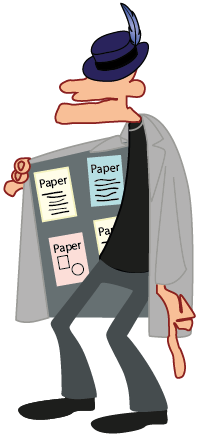
What is Academic Integrity?
Academic integrity is one of the four Penn State Principles. The statement in Policy 49-20 of the Faculty Senate reads:
"Academic integrity is the pursuit of scholarly activity in an open, honest and responsible manner. Academic integrity is a basic guiding principle for all academic activity at The Pennsylvania State University, and all members of the University community are expected to act in accordance with this principle. Consistent with this expectation, the University's Code of Conduct states that all students should act with personal integrity, respect other students' dignity, rights and property, and help create and maintain an environment in which all can succeed through the fruits of their efforts."
- http://senate.psu.edu/policies-and-rules-for-undergraduate-students/47-00-48-00-and-49-00-grades/#49-20
Acts which violate the University's Code of conduct are considered acts of academic dishonesty. These include (but are not limited to) plagiarism, cheating, and copyright violations. Some examples of different acts of academic dishonesty are listed in the Code of Conduct for Penn State Students.
Why is Academic Integrity Important?
As a student at Penn State, you will face many challenges and opportunities to demonstrate integrity in your work. Cheating, plagiarism, and copyright violations are all considered violations of Penn State's academic integrity policy. Academic dishonesty hurts everyone in the community. It not only damages your personal reputation, but also the reputation of the entire university.
Unfortunately, many students commit accidental violations of academic integrity simply because they don't know that what they are doing is wrong. Others say they "had" to cheat because they didn't have enough time to complete all of the work, or because "everyone else" is cheating and they won't get a good grade unless they cheat too.
The information in this tutorial will help you better understand what constitutes academic dishonesty and how to avoid committing acts of academic dishonesty.
Plagiarism and Cheating
Student Dialog - What is Cheating?
Lori : Hey guys, haven't seen you since the semester started.
Brian, Sage, Deena, Jose : Hi Lori!
Brian : How's your second semester going?
Lori : It's going OK. Just trying to keep up with all my assignments. How about yours?
Brian : It's OK. I'm having some trouble keeping up in math class, but I've got a friend who is going to help me out, so I think I'll pass.
Jose : How is this friend going to help you?
Brian : Well, he already had the class, so I'm just going to use his homework and change the answers some. It's not like I'm not going to study, because I'm studying his notes!
Sage : Whoa there, Brian. Isn't that a violation of the academic integrity policy?
Deena : Yeah Brian. I'd be careful if I were you. I think that's called cheating.
Brian : You serious? I'm studying, so why is it cheating?
Jose : Way serious man. It's cheating because you plan to turn in homework someone else did and pretend you did it.
Brian : But I studied and I made some changes.
Lori : Get real, Brian. You know that's cheating. Why don't you let us help you study instead of using your friend's homework?
Jose : Yeah, I've already had that math class. I can help you understand the problems better.
Deena : You could also go to Penn State Learning Center for help. They have math tutors there who can help you. That's where I went for help with my math course.
Brian : I guess I could do that. I never really thought about what I was doing as cheating. I certainly don't want to be considered a cheat, nor do I want to get caught cheating! Thanks for setting me straight guys!
Jose : Even if you get a lower grade, it's better than knowing that you only got a good grade because you cheated.
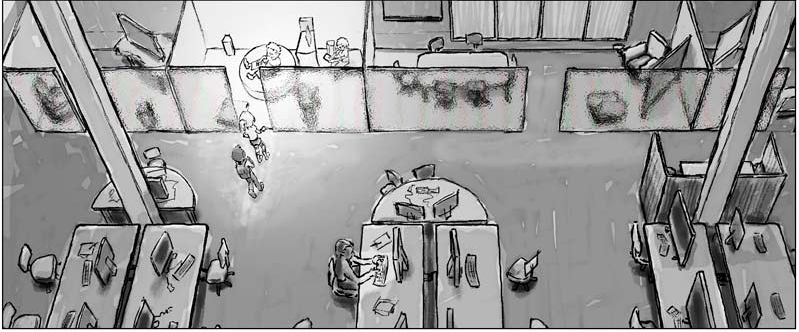
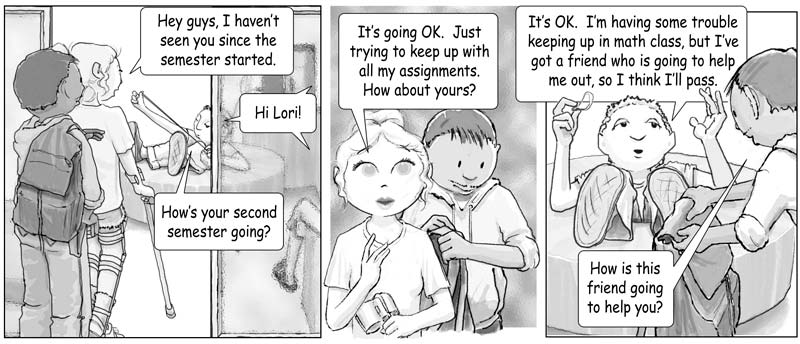
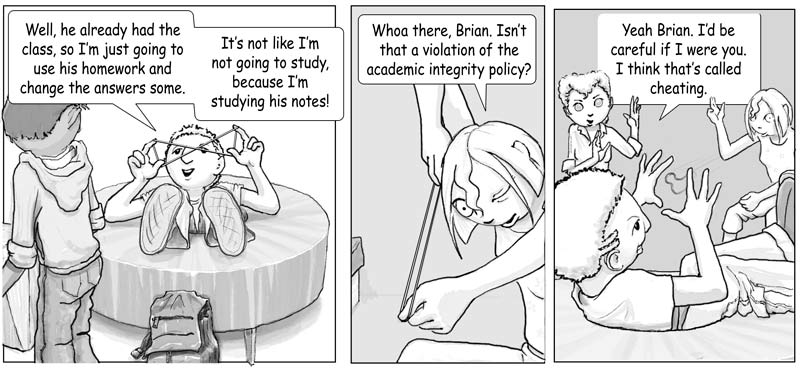
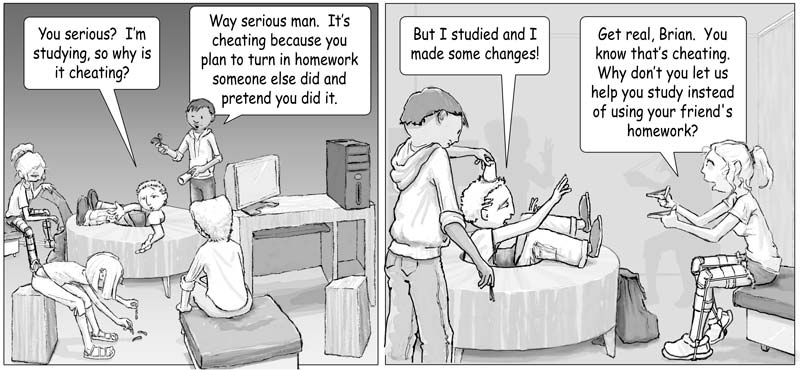
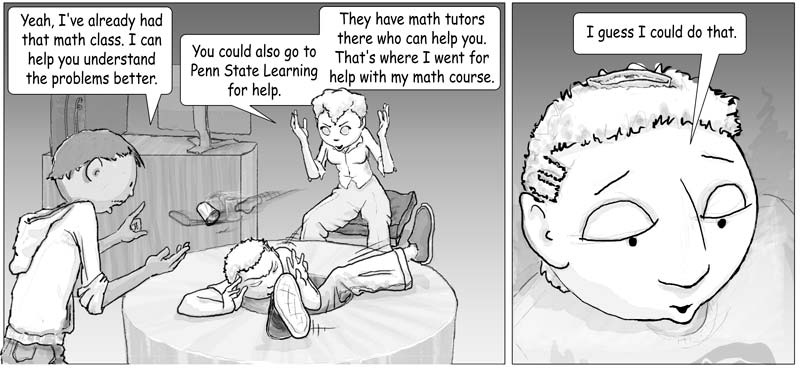
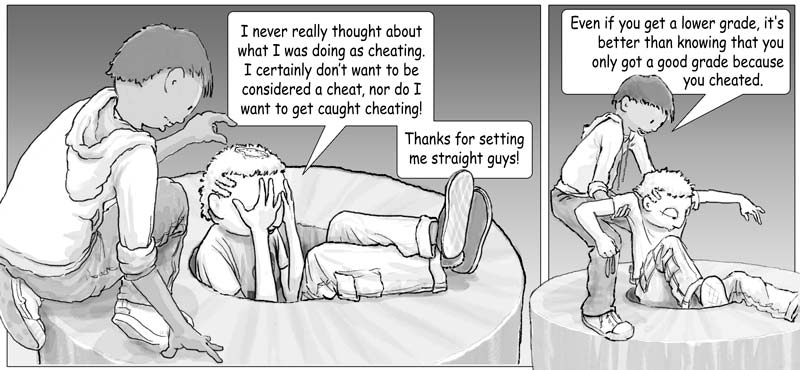
Academic cheating is anything you do to make it appear that someone else's work is your own or allowing someone else to copy your work and submit it as their own. It can include sharing another's work, copying answers on an exam or homework assignment, buying a research or creative paper, paying someone else to do your work for you, obtaining copies of exams, homework assignments, and notes and using them in place of doing your own work, etc. When grades, rather than education, become the focus, students become more willing to do whatever it takes to get an "A." Although some acts of cheating are unintentional - the student doesn't realize what he/she is doing is considered cheating - most of the time students know when they are doing something wrong.
[top of page]
Student Dialog - What is Plagiarism?
Jose : Did you hear what happened to that guy in our composition class?
Brian : No, what guy?
Jose : Phil. The guy that always leaves class early.
Brian : Oh yeah, him. What happened to him?
Jose : He got caught plagiarizing and is in big trouble!
Sage : Hi guys, what's up?
Jose : Hey Sage. I was just telling Brian about Phil getting caught plagiarizing.
Sage : Yeah. That was tough man. But he should have known better. Google and Turnitin.com make it easy for faculty to catch students who steal the work of others -- especially if they just copy and paste it from the Web.
Brian : Yeah, I know. But this worries me some. What if Phil didn't mean to plagiarize?
Sage : Well, if he didn't mean to, then he can discuss that with his professor.
Deena : Hi, guys. I heard you talking about plagiarism. I've always been confused about the difference between plagiarism and cheating.
Jose : Well, first, plagiarism is a form of cheating.
Sage : That's right. The way I understand it, plagiarism is when someone copies or uses somebody else's work and acts like it is theirs.
Brian : OK. That's pretty clear. So if you copy something, you should give the author credit for it. But I still don't see how professors would know when someone has plagiarized the work of others.
Sage : Well, most professors can tell when you've used the work of some author in their particular field. Plus, they can use resources on the Web like Google and Turnitin.com to see if the text in your paper came from a Web site.
Brian : Turnitin.com? What's that?
Sage : Well, it's a computer database that professors can use to check student papers for plagiarism. What they do is, they submit the paper and the database checks it against millions of documents and sends the professor back a report listing any text that is not original. Then the professor can go through each of the instances that Turnitin has found and verify whether or not they are properly cited.
Brian : Wow, that's pretty high-tech! Guess we all better be careful not to copy and paste when we write our papers!
Jose : Instructors also keep papers from previous semesters and previous assignments. Even if you copy something that can't be checked by Google or Turnitin because it isn't on the Web, instructors tend to remember what other students have written and can check through their inventory of student papers to see if the paper you are handing in has been copied.
Deena : It's also important to make sure you cite the work correctly if you do copy and paste. In addition to giving the author credit, you also need to format the text correctly by indenting it and putting it in quotes.
Brian : My instructor told us to use the Chicago Manual of Style when citing sources in our papers. The style guide covers how to format and cite the text when you are copying and pasting exact text.
Deena : At any rate, learning how to write a paper and correctly cite sources are important skills to have. Isn't that why we're here in the first place? To learn?
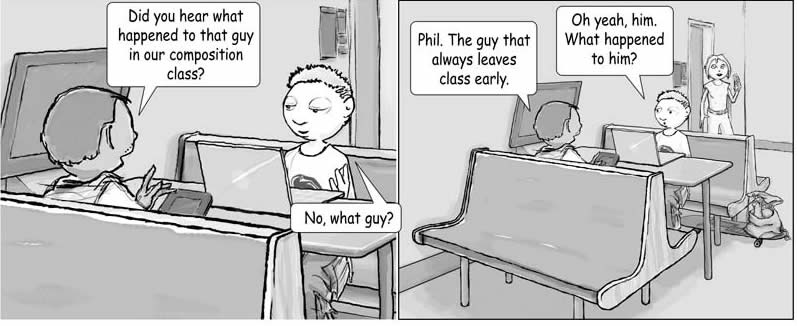
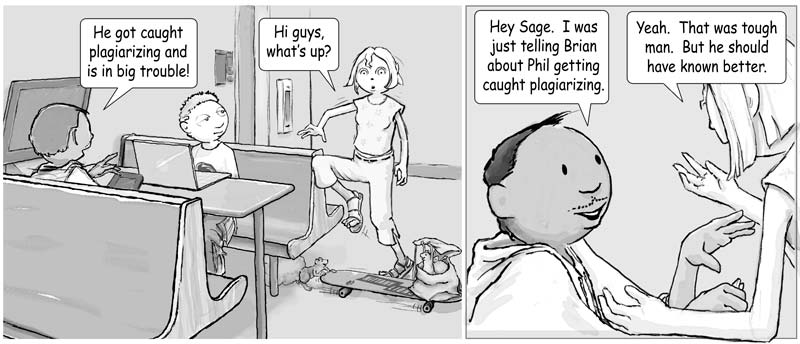
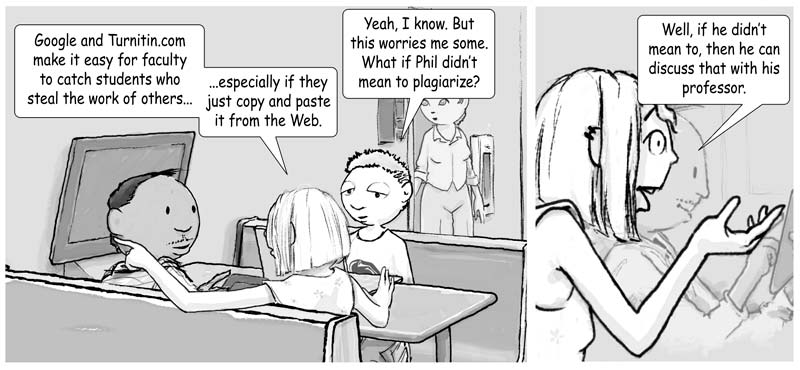
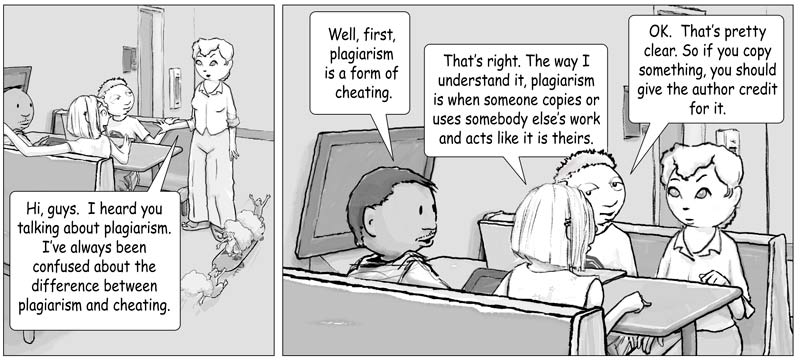
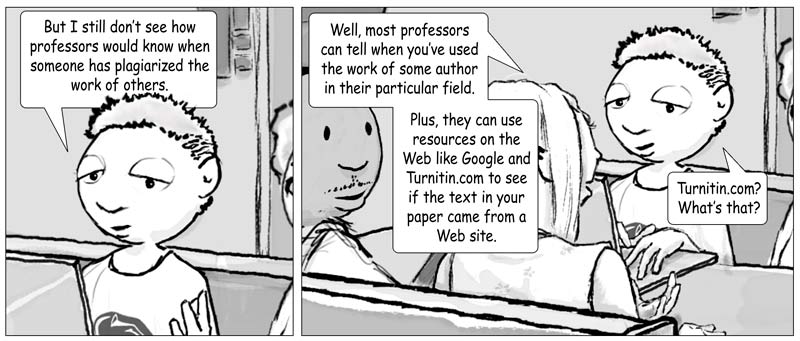
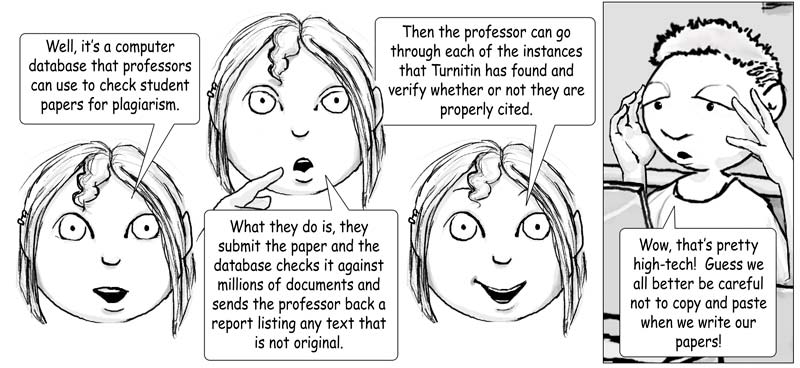
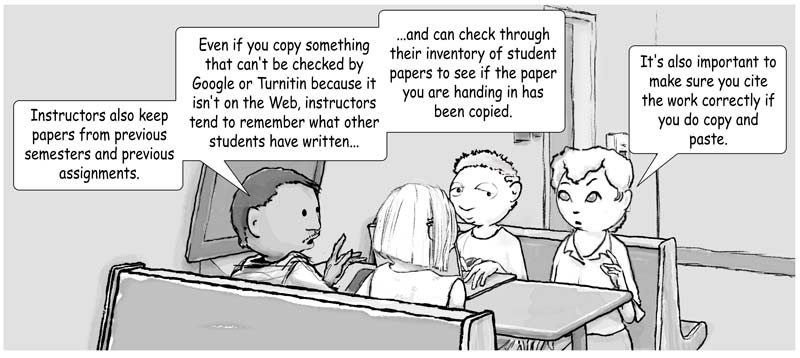
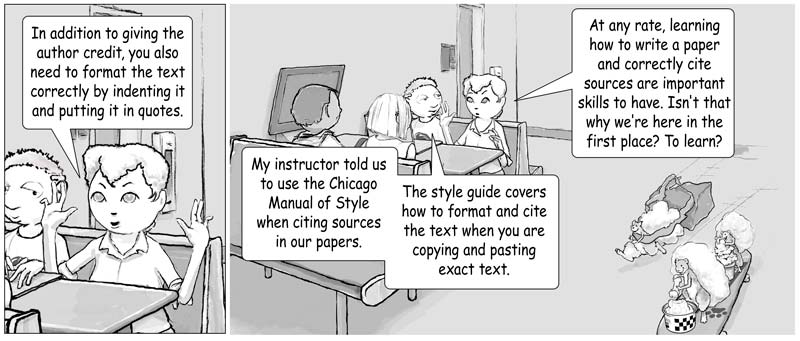
* Turnitin.com is a plagiarism detection tool to which Penn State has a license. All instructors within the Penn State community who are currently teaching a bona fide Penn State course may have an account at Turnitin.com and may submit student work for verification. As a student at Penn State, it is your responsibility to know what constitutes plagiarism and what the penalties are for getting caught. More information about Turnitin.com is available at the Penn State Turnitin Web site as well as at the Turnitin.com Web site.
Like cheating, plagiarism is also implying that another person's work is your own. Plagiarism is a form of cheating. You commit plagiarism if you:
- Submit a paper you have not written to be graded or reviewed as your original work.
- Copy answers or text from another classmate and submit them as your own.
- Quote or paraphrase from another paper, book, journal article, or Web page without using quotation marks, indenting the block of text, and crediting the original author.
- Use long pieces of text or unique phrasings without using quotation marks, indenting the block of text, and acknowledging the original source.
- Cite data without crediting the original source.
- Propose another author's idea as if it were your own.
- Present another author's structure or sequence of ideas as your own without giving the original author credit.
- Fabricate references or use incorrect references.
- Submit someone else's computer program or spreadsheet with minor alterations as your own work.
- Use the same paper, project, or something you created in high school for a current undergraduate course without permission from the faculty member.
This is not a definitive list - any action which implies that someone else's work is your own can be considered plagiarism. However, things like studying in groups and copying a classmate's notes from classes you may have missed are not necessarily acts of plagiarism or cheating. These are things your instructor should address when giving an assignment. If you have any questions about whether working together and sharing notes is OK or not, ask your instructor. It is better to ask for clarification before you start than to have to defend your actions later.
The following Web sites provide examples of the different types of plagiarism. Pay attention to the fact that avoiding plagiarism is not as simple as not "cutting and pasting" from other documents:
- Avoiding Plagiarism (PDF) (UC-Davis)
- Unacceptable Paraphrases (Indiana University Writing Tutorial Services)
- Avoiding Plagiarism (Northwest Missouri State University Owens Library)
- Academic Integrity (Penn State Library Learning Services)
Sometimes the boundaries between research and plagiarism can be ambiguous. The OWL Avoiding Plagiarism Web site has a good discussion on the boundary between using other people's research and plagiarism (see reference 1).
[top of page]
Why Plagiarism and Cheating are Wrong
Penn State is an institution of both learning and research. When you cheat and commit plagiarism, you hurt yourself and the community in the following ways (see reference 1) :
- You deny yourself the opportunity to learn and practice skills that may be needed in your future careers. You also deny yourself the opportunity to receive honest feedback on how to improve your skills and performance.
- You invite future employers and faculty to question your integrity and performance in general.
- You damage Penn State's reputation and invite others to question the integrity of Penn State and the value and validity of degrees issued by Penn State.
- You commit fraud on faculty who are evaluating your work.
- You deprive another author due credit for his or her work.
- You show disrespect for your peers who have done their own work.
[top of page]
Unintentional Plagiarism - How to Properly Cite a Reference
Like cheating, some acts of plagiarism are unintentional - the student simply doesn't realize that what he/she is doing is wrong. One of the most common errors is not citing sources used for an assignment.
When do you need to cite your sources? The short answer is that you should cite a source any time you incorporate into a project, report, or paper an idea, quote (written or spoken), data, image, or other content that is not yours no matter where it came from, unless it is common knowledge.
The term common knowledge refers to any knowledge that you can reasonably expect other people to know. For instance, the fact that there are bilingual speakers in the United State is common knowledge. You would not have to cite any sources.
The specific percentages or numbers of bilingual speakers would not be common knowledge. If you were using any graphs or numbers about how many bilingual speakers are in the United States, you would need to cite where you obtained the information. If someone, like a professor, told you the information in person or via e-mail, you can cite it as a "personal communication."
There are several citation standards such as MLA, APA, Chicago Manual of Style, and more. Links to several common style guides are available from the Penn State library "Citation and Writing Guides" http://www.libraries.psu.edu/psul/researchguides/citationstyles.html.
However, you should always follow whichever citation or bibliography format your instructor gives you.
Citation Guidelines
(see reference 2)
- University of Iowa's Guide to Citation Style Guides (esp. Web))
- Rutger's Library - Writing and Citation Formatting
Activity 1: Plagiarism and Cheating
Let's see if you understand what plagiarism is. Determine if each of the situations in the quick quiz below constitutes plagiarism or not.

Information about Copyright and Fair Use
Student Dialog - What is Copyright?
Lori : So are we ready to put this team project together?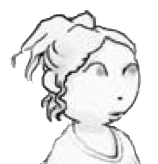
 Sage : I am; I've got other assignments to finish before the semester is over.
Sage : I am; I've got other assignments to finish before the semester is over.
Deena : Me too. Let's get going.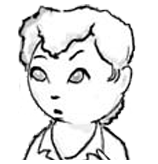
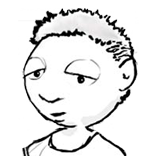 Brian : We've got all the basic information we need, but I think we could jazz up our presentation by having the students take a survey in class. I found a survey on line that we could use. You're supposed to pay for the surveys, but they cost $1.00 each. We can just make copies on my dad's copier.
Brian : We've got all the basic information we need, but I think we could jazz up our presentation by having the students take a survey in class. I found a survey on line that we could use. You're supposed to pay for the surveys, but they cost $1.00 each. We can just make copies on my dad's copier.
Jose : Let me see that.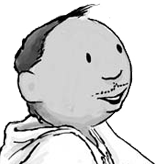
Deena : I don't know guys, this sounds like stealing to me.
Sage : I'm with Deena. I think this is a copyright violation.
Lori : What's a copyright?
Sage : Whenever someone creates something, they own the "right" to it. Like if you write a poem, it's yours. No one else can say they wrote it, because you wrote it.
Lori : I get it. So the survey that Brian wants us to use belongs to its owner. Right?
Sage : Right! The way I see it, we have several options. We could buy the survey; ask for permission to copy the survey; or develop our own!
Brian : Gee guys, I didn't mean to get us in trouble. I just thought the survey would be a good way to get student attention in class—and a good grade!
Jose : No worries Brian. It is a good idea! We just can't use THAT survey. Let's develop our own!
Sage, Lori, Deena, Brian : OK, let's do!
A copyright gives the creator of an original creative work the exclusive right to control who can make copies of it, or make works derived from it (see reference 3). Even as a student, you have the right to control the use of your original creative projects and papers. Others who use your work must follow fair use guidelines or have your permission to use your work, and make a proper citation in the bibliography.
More information about copyright:
- http://www.templetons.com/brad/copymyths.html (10 Big Myths about Copyright Explained)
- http://www.lib.umn.edu/copyright/map.phtml (University of Minnesota Libraries - Copyright Initiatives)
[top of page]
How are Copyright Laws and Plagiarism Related?
If you take someone else's work and put your name on it so others will think it is your original work, you are committing plagiarism, even if you paid for a legal copy of the materials. In addition, you are limited in the amount and nature of someone else's work you can use for presentations, projects, papers, and reports without asking for their permission, even when you give credit to the work's author/owner. Using more of someone else's work than "fair use" allows, without their permission, is a violation of copyright laws. It is possible to violate copyright laws without committing plagiarism and to commit plagiarism without violating the copyright laws, but both situations would be considered acts of academic dishonesty under Penn State's Academic Integrity policy.
[top of page]
What is Fair Use?
"Fair use" is a set of guidelines within the copyright law that allows for the limited use of copyrighted works without first obtaining the permission of the author or owner. These fair use guidelines make it possible for you to use parts of published works in projects, research papers, and reports you write for classes without violating copyright laws.
How can I tell if the use of a copyrighted work is fair?
When evaluating a particular use of copyrighted materials, consider the following four factors and ask yourself the following questions (see reference 4):
- The purpose and character of the use:
- Does the new work transform the original work or offer something beyond the original?
Copyrighted works that are altered significantly are more likely to be considered fair use.
- Is the use for nonprofit or educational purposes?
Copyrighted works used for nonprofit or educational purposes are more likely to be considered fair use.
- The nature of the copyrighted work:
- Is the copyrighted work published or unpublished?
Use of published works are more likely to be considered fair use.
- Is the original work out of print?
Use of out of print works are more likely to be considered fair use.
- Is the copyrighted work factual or creative?
Use of factual works are more likely to be considered fair use.
- The amount and significance of the portion used in relation to the work as a whole:
- Is the amount of the original work used reasonable?
The smaller the percentage of the work used, the more likely it is to qualify as fair use.
- Is the section of the original work used the most important part of the work?
The less significant the portion of the work used, the more likely it is to be considered fair use.
- The effect of the use upon the potential market for or value of the work:
- Does the new work appeal to the same audience as the original work?
Copyrighted works that are used for another purpose or designed to appeal to a different audience are more likely to be considered fair use.
Even if something you use in a project, paper, or report qualifies as fair use, you still have to cite the source of the work to avoid committing plagiarism.
[top of page]
Fair Use Guidelines for Multimedia Projects
Allowed Uses
Many students like to make use of various forms of media, like images, recorded portions of television programs, digitized sound files, etc., in their projects and presentations. The Fair Use Guidelines For Educational Multimedia allow students who create educational multimedia projects containing copyrighted materials to use their projects for
- Educational uses in the course for which they were created.
- Portfolios as examples of their academic work.
- Personal uses such as job and graduate school interviews.
Students who create multimedia projects and follow the fair use guidelines do not have to request permission to retain a copy of their materials for their personal portfolio after completing their class or presentation. The guidelines require that all multimedia projects that include copyrighted materials:
- Credit the sources, display the copyright notice, and provide copyright ownership information. (The credit identifies the source of the work, including the author, title, publisher, and place and date of publication. The copyright ownership information includes the copyright notice, year of first publication, and name of the copyright holder.)
- State on the opening screen and on any accompanying print material a notice that certain materials are included under the fair use exemption of the U.S. Copyright Law and have been prepared according to the multimedia fair use guidelines and are restricted from further use.
- Clearly mark the materials as a student project with the specific class, date of the presentation or project, and complete university information.
- Do not contain materials that have been altered or separated from original content for reuse.
Storage
The fair use guidelines place restrictions on how the completed multimedia projects may be retained and stored.
- No more than two copies of a project may be made. One copy may be retained by the creator; the other must be held in the school's library or media center.
- Students may not make their own copies of copyrighted instructional materials used by instructors in class.
- Projects cannot be replicated or distributed for any purpose other than those listed in the guidelines without obtaining permission from all copyright owners.
Amount of Work You May Use
The guidelines also limit the amount of copyrighted multimedia material that can be included in educational projects to
- Up to three minutes or 10 percent, whichever is less, of a single copyrighted motion media work.
- Up to 10 percent or 1,000 words, whichever is less, of a single copyrighted work of text.
- An entire poem of less than 250 words or up to 250 words of a longer poem but no more than three poems by one poet or five poems by different poets from a single anthology.
- Up to 30 seconds or 10 percent, whichever is less, of music and lyrics from a single musical work.
- Up to five photographs or illustrations by one person and no more than 15 images or 10 percent, whichever is less, of the photographs or illustrations from a single published work.
- Up to 2,500 fields or cell entries or 10 percent, whichever is less, from a numerical database or data table.
A Note on Digital Media
The opportunities for inappropriate copying and use of copyrighted electronic material extend into media other than just text, including audio, video, graphics files, and even data sets. Even though digital files are readily available on the Internet, in most cases you must still have written permission before downloading or electronically copying and using someone else's electronic files (including music) for anything other than a project or presentation for a class. Also, when copying digital files, just as when copying any material, you must be very careful to follow the fair use guidelines as previously discussed.
Some Web sites may have a page listing circumstances in which a file could be downloaded and used (e.g. " for educational or non-commercial uses"). In these instances you may not have to follow fair use guidelines, but you still must give credit for the work by citing the author and/or Web site if you are using the materials for a project or paper. If you cannot determine whether your use of electronic materials is allowed, it is better to just not use them and create or find something else to use instead.
(see reference 5)
More Information about Fair Use
- Find more information about Ethical and Legal Use of Digital Media FAQ (Penn State Information Technology Services).
- A Guide to Copyright, Fair Use, Creative Commons for students (Penn State University Library Learning Services).
[top of page]
What is a Public Domain Work?
A public domain work is a creative work that is not protected by copyright and which may be freely used by everyone. Creative works are placed in the public domain when:
- The term of copyright for the work has expired;
- The author failed to satisfy requirements to maintain the copyright or
- The work is a work of the U.S. Government.
Even if something that you use in a project, paper, or report is in the public domain, you still have to cite the source and author of the work to avoid committing plagiarism.
[top of page]
How do you know which Web resources you are allowed to use?
As a general rule, a good way to determine whether a Web site is copyright protected or in the public domain is to relate it as closely as possible to a print resource. Publications created by the U.S. government are in the public domain, for example, so information provided at U.S. government Web sites is also in the public domain.
Not every Internet resource can be related to a corresponding print resource, however. Erroneously posting copyrighted material to your own Web site carries even greater risks than innocently using copyrighted material in your class work. If you plan to post work you have not created to your Web site, you should avoid:
- Copying and posting links that contain descriptions of the linked sites, although posting links that contain only a URL and the title of the site is generally acceptable.
- Downloading graphics, including bullets, logos, fonts, photographs, and illustrations.
- Framing information from another site, particularly if you delete the site's ads or identifying information or make it look as if the information is your own.
- Deep-linking to an interior page of a site. Bypassing advertising or identifying information on a site's main page may deprive the copyright owner of revenue.
- Copying a site's html code.
You also should keep in mind that works posted on other sites might not have been posted by the copyright owner or with the copyright owner's permission. Just because a copyrighted work is already posted on the Web doesn't mean it's there legally. Even sites that have obtained the required permission may not have the right to transfer that permission to you. Always get permission to use a copyrighted online work from the owner of that work, not from a secondary source. If you plan to use the work online, be sure to get permission to use the work electronically. Print rights and electronic rights are not the same thing. (see reference 6)
Activity 2: Copyright and Fair Use
Let's see how much you understand about copyright, fair use, and public domain. Determine if each of the situations in the quick quiz below constitutes a violation of copyright laws (true) or not (false).

Excuses and Penalties
Excuses Students Give for Academic Dishonesty
You may think you have a good excuse for academic dishonesty, but you should think again. (see reference 2)
I. "I'm too busy."
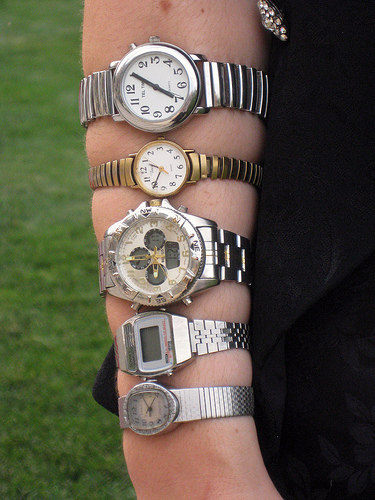 Maybe you think you have too many credits or are working too many hours to be able to complete your assignments. However, it is your responsibility to make sure you have scheduled adequate time to complete all your assignments.
Maybe you think you have too many credits or are working too many hours to be able to complete your assignments. However, it is your responsibility to make sure you have scheduled adequate time to complete all your assignments.
If you discover that you do not have enough time to complete an assignment, it is far better to discuss your situation with your instructor or TA than to commit plagiarism.
The worst that can happen to you in this situation is that you fail the class and have to retake it. While failing a class is embarrassing and retaking it is inconvenient, it is not as bad as being found guilty of academic dishonesty and receiving sanctions (see below).
II. "My work isn't good enough."
Maybe you feel that the quality of your work is so poor that you could never pass the class. Faculty do not expect your work to be 100% perfect. The purpose of any assignment is for you to learn and practice new skills.
If you feel your skills are especially weak, it is far better for you to discuss your concerns with your instructor. He or she may be able to point you to resources that can help you improve your grade.
Remember, it is always better to fail honestly than to be found guilty of academic dishonesty.
III. "Everyone else is doing it. I have to do it too just to keep up."
More than half of all Penn State students admit to cheating at some point in their college career. Students who don't cheat feel like they are put at an unfair disadvantage by students who do cheat. However, there is no evidence to show that students who cheat receive higher grades than those who don't cheat, nor is there any evidence to show they are hired for better jobs. In addition, the consequences of getting caught cheating far outweigh any momentary gains. It's better to fail a particular exam, paper, or assignment than to be found guilty of academic dishonesty and suffer potentially worse consequences.
IV. "I need to cheat in order to have a high G.P.A."
Some students honestly feel that the only way to a high G.P.A. is through cheating, but that simply is not true. Students have achieved high G.P.A.'s without cheating, and, in fact, a Penn State Pulse survey and other studies have shown that students who cheat tend to have lower G.P.A.'s than students who do not cheat.
Ask yourself this: Would you want a doctor who passed his or her courses only because of cheating?
V. "I didn't know it was academic dishonesty."
It is your responsibility as a Penn State student to know what constitutes academic dishonesty. That's what this tutorial is all about.
If you find that you are in a situation where you are not sure if your work could be construed as cheating, ask your instructor or look for examples of what not to do. Some sources of examples are provided earlier in this tutorial and your department or college may have examples related specifically to that field.
VI. "They'll never find out."
Just because your instructors are busy faculty and TA's does not mean they are unaware. Many faculty are aware of online "paper mill" Web sites and have also seen enough other assignments to know if something looks "too familiar" or "doesn't seem right." In addition, educators are developing and using technologies which can look for similar phrases across papers. Penn State is a member of Turnitin.com, a resource that allows faculty to check papers against a vast database of information for occurrences of plagiarism.
VII. "I meant to include citations, but I forgot/ran out of time."
Get into the habit of inserting citations, even in your rough drafts. Using index cards for source information is one way you can keep track of your references; other methods are equally successful. If you don't know which citation to use, put some question marks in the draft and track it down later.
If you need to review citation guidelines, you can access the Penn State Library Citation Styles. There are many citation styles, so you should ask your instructor which one is appropriate for a particular class if he or she has not indicated a citation style for you to use.
[top of page]
How You Can Avoid Situations that Lead to Academic Dishonesty
- Be proactive. If you don't understand an assignment or are unclear about your instructor's expectations, ask early in the semester. Don't wait until the last minute!
- Plan ahead. Look at the work load for all of your courses. When are your assignments due? How much work will each take? What can you start on right away? Will you need to learn a new citation style or method of research for any of these assignments?
- Know where to find information and resources.
- Citation styles
- University polices on academic integrity
Remember, upholding your personal academic integrity is your responsibility as a member of the University community, so plan ahead and make sure you understand your assignments and where you can go for help.
[top of page]
Consequences for Academic Integrity Violations at Penn State
There is a University policy known as G-9 which provides direction for responding to academic integrity violations of the University's code of conduct. In addition, each college and campus has designed specific guidelines for responding to allegations and has the authority to impose sanctions on students who violate the academic integrity policy. Faculty members are responsible for conveying the allegation and sanction to the student, who can then choose to accept the charge and sanction or appeal to the College (or campus) academic integrity committee for a review or hearing. The outcome of that review or hearing is final and cannot be appealed. When disciplinary sanctions are recommended, the case will be managed by the Student Affairs' Office of Student Conduct.
The outcome of all academic integrity cases is sent to the Office of Judicial Affairs or the Judicial Affairs designee for record-keeping. When a student is found responsible for a violation, the student's previous academic integrity history will be viewed and a more serious sanction could be assigned as a result of repeated misconduct.
In Fall 2000, Penn State instituted the XF grade, which is a disciplinary sanction assigned to students found responsible for committing extreme acts of academic dishonesty. The XF grade will appear on the student's official transcript and states that the student's grade was assigned specifically because he or she committed an act of academic dishonesty.
In addition to the XF grade, there are a number of other sanctions that could be imposed when a student is found responsible for academic dishonesty, including warnings, letter grade reductions, and/or disciplinary sanctions such as probation or expulsion.
Many colleges and campuses at Penn State have their own policy statements on academic integrity which are based on the University-wide policy, 49-20.
Activity 3: Excuses and Penalties
One final quiz to see what you have learned about academic integrity at Penn State.

Academic Integrity Case Studies
Read each of the following scenarios. While reading the scenarios, think about what the problem is and what the best solution would be based on Penn State's principles and policies.
Case Study #1: Extra Credit
 David is a senior and only has three more classes this semester before he graduates. He feels the pressure to uphold his 3.65 GPA, as well as just wanting to finish and get the classes out of the way.
David is a senior and only has three more classes this semester before he graduates. He feels the pressure to uphold his 3.65 GPA, as well as just wanting to finish and get the classes out of the way.
In one of his classes, an extra credit assignment is to read through a set of given texts from certain articles and books that have been given by the instructor throughout the semester, and then to compile personal thoughts based on the principles covered. To David, it seemed like basically doing something he already had done in the class—read the same information again. He figured the instructor just wanted to make sure the students really did read the articles, so David wrote his paper using direct quotes and verbatim phrases from the reading without correct citation. It was just extra credit, after all, so if it was not as good as his other work, it couldn't really hurt his grade.
|
Is what David did wrong? Why or why not? Do you think David is right in thinking that this assignment really doesn't matter and can't really hurt his grade because it is only for extra credit?
Response 1: This is an example of sloppy work that qualifies as plagiarism and could have serious consequences for David, including the possibility of a lower grade. It doesn't matter that the assignment is only for extra credit. If David is going to take time to do the assignment, he needs to do his best work.
Response 2: As an instructor, I believe I would make him resubmit the assignment before giving extra credit. First, if the assignment is to reflect on the readings, proper citation is needed in order for a reader to separate the content of the original article from the author's reaction to it. Second, it is good practice to track citations during the research and paper writing process; famous historians have had their careers ruined with plagiarism scandals because "they forgot to put in quotes." I believe, a student can genuinely forget to put in the quotes in a paper. I know of one case where a student did not use proper citations, but had the correct entry in the bibliography. It is not necessarily conscious plagiarism, but it is bad paper writing form and should be addressed.
Response 3: My take on this is that David is wrong because he has had the opportunity to learn to do things the right way during his college career, and when he chooses not to use the skills he has built he is taking a step backwards (not to mention that what he is doing by using quotes without citing properly is illegal). Going to college is not supposed to be about the grades as much as it is about the education itself. Having a good education only counts if you use it, and the more you use it the greater the rewards. If you just do the work to get by, then when you get out in the workforce and have greater responsibilities, life will be much harder for you because you have not learned the proper skills. Instead, you spent more time getting out of using them than actually accomplishing good work that will bring you rewards and greater responsibility.
|
Case Study #2: Copying
 Janie has just moved to the Twin Cities from a non-English speaking country. It is hard to fit in, understand the language, and make friends. She misses her family and it is sometimes difficult for her to concentrate on all her classes.
Janie has just moved to the Twin Cities from a non-English speaking country. It is hard to fit in, understand the language, and make friends. She misses her family and it is sometimes difficult for her to concentrate on all her classes.
She is taking a biology class this semester, which turns out to be much harder than she thought it would be. In one of the tests, the answers are to be marked by blackening out lettered circles on a separate answer sheet. Janie studied as hard as she could, but it seemed she did not read the topics that most of the questions on the test covered. Near tears, she hands in her test answers and sits down at her desk to await the end of class. To her right, Mark is working on his test. He seems to have no trouble with the class and is carefully marking his own answers. Glancing at his answer sheet, Janie sees that he has marked several answers differently than hers.
Janie goes up to the proctor and asks for her test answer sheet back, saying that she just remembered she did not correctly put in her student ID number. She quickly erases and changes some answers to reflect what she saw on Mark's paper and hands it back in again.
Some time later, the instructor informs Janie that the proctor saw her change her answers. She is going to be given an "F" for the test.
|
Janie thinks her actions do not constitute plagiarism or academic dishonesty, and that the sanction is too harsh, especially after she describes what she feels are extenuating circumstances. Is she right? Do you have any ideas about better ways for Janie to handle this problem in the future?
Response 1: The fact that Janie has trouble with English isn't justification for copying answers from another student's paper. The instructor didn't really have any choice in the matter -- the rules are very clear. The student got caught cheating so the "F" grade on the test is appropriate in this instance. Since Janie disagrees, she doesn't have to accept the sanction. She can appeal to the College is academic integrity committee. Obviously, Janie realized that she was having trouble with comprehension well before the exam. There are many resources available to students who are having trouble that Janie could have used in addition to asking the instructor for additional help.
Response 2: It's hard to admit you may be having difficulty with a class, but copying answers and risking an F is not a good solution. If you sense early in the semester that you are feeling lost, you may want to approach another student, talk with your instructor, or go to the University Learning Centers and schedule extra tutoring. Oddly, this could become a good chance for you to meet other people at the University. This IS a clear case of cheating because Janie copied answers from another student. Unfortunately, "stress" is not usually considered an extenuating circumstance. Failure may be embarrassing, but not as embarrassing as failure because of academic dishonesty.
Response 3: Janie's actions clearly constitute deceitful behavior and academic dishonesty. The sanction is justified for her action. If Janie learns to use deceit to "get by" in challenging situations during her academic years, she will probably continue the behavior out in the workforce. I would not want her working for or with me. These sanctions are in place to reinforce important information. They should not be waived for challenging circumstances. She could have talked with the professor and asked for extra time to study for her test, or she could have asked more questions about what subject items were going to be on the test so she could better focus her studies. Communication between student and instructor throughout the duration of the course is important and it is incumbent on the student to be proactive about it.
|
[top of page]
Case Study #3: Group Tests?
Chris, Todd, and Mike are assigned to work on several group assignments together in a history class this semester. One of their projects includes each of them researching different events on a given time line, and then combining the information together.
On a test that covers some of the information gathered by Todd, Mike cannot remember what the answers are. He reasons that because the three of them had worked on the project together as a collaboration and got a good grade, it shouldn't be a problem to ask Todd what the answers are. Since they sit not far from each other in class, Mike asks Todd to tell him the answers. Todd does not want to offend his friend, so he moves his arm so Mike can see his paper. Chris also sits nearby and sees this.
|
Is this plagiarism/academic dishonesty? Are all three of them at fault? Is Mike more so than Todd? Is Chris obligated to tell the instructor what he saw?
Response 1: This is cheating. When completing a group assignment, it is the responsibility of each member to know all of the content, not just the content of their particular piece. Chris might need to talk to the instructor, but first he needs to talk to his friends and try to persuade them to go to the instructor themselves. If that fails, then Chris is obliged to tell the instructor what he knows.
Response 2: Although the instructor may not say this, you should assume that you are responsible for knowing ALL the content of a group project, not just the part you worked on individually. In a test-taking situation, it is generally safe to assume that no collaboration will be allowed UNLESS the instructor says otherwise. Todd and Chris may want to help their friend Mike, but if Mike were caught, both of them could be implicated and have their grades affected also.
Response 3: This is academic dishonesty. Though several people might work on a project together, they all should take responsibility for understanding the whole project. Communication is important here so that all participants on the project are well informed during its creation and at its completion. I wouldn't want these people working for or with me since I couldn't trust their accountability for their own work or for the project as a whole. I can imagine if one of them ended up leading a team project out in the workforce they might turn out to be the kind of person who would blame other team members for delays or obstacles, rather than the kind of person who would take responsibility and go the extra mile to get successful project results. I don't know that Chris is obligated to tell the instructor. It is the instructor's job to monitor security during a test. It would be a hard decision for Chris--I do know that if it were me in that position I would avoid the others in the future.
|
[top of page]
Case Study #4: Other's Thoughts
 Jennifer really enjoys the art history class she is taking this semester. She spends a lot of time on her final project - a portfolio of works of art that she selects, writes a brief background about the artist, and then describes what she feels about the piece. She is careful to make sure all her information about the artists is correct, and reads several essays on the artists she has chosen. She agrees with most of what the essayists have to say regarding the pieces. She represents some of their thoughts in her project as her own, reasoning that since it is not fact, and instead intangible opinion, and because she agrees with them, then she is not plagiarizing.
Jennifer really enjoys the art history class she is taking this semester. She spends a lot of time on her final project - a portfolio of works of art that she selects, writes a brief background about the artist, and then describes what she feels about the piece. She is careful to make sure all her information about the artists is correct, and reads several essays on the artists she has chosen. She agrees with most of what the essayists have to say regarding the pieces. She represents some of their thoughts in her project as her own, reasoning that since it is not fact, and instead intangible opinion, and because she agrees with them, then she is not plagiarizing.
|
Is she right or wrong? Why?
Response 1: Yes, she is wrong. This is plagiarism. Jennifer is taking someone else's work and presenting it as her own. Even though she is of the same opinion as the authors of the essays, she still needs to give them credit for their work.
Response 2: An author's analysis is a piece of "intellectual property" and does need to be cited and acknowledged. An instructor is not necessarily interested in a new analysis, but rather what the opinion of the student is. If Jennifer does agree with the essays she reads, she should cite them and explain WHY she agrees. This shows the instructor how carefully she did think about her projects.
Response 3: Thoughts cannot be copyrighted, so there seems to be no direct infringement in this case. However, there is a fine line between having and writing thoughts that are similar to something you have read and using direct quotes. If it were me, I would use a direct quote, cite it properly, then elaborate on it using my own words. I would do this for each thought or idea that paralleled what I had read. Writing this way works in her favor, because using direct quotes, cited properly, lends credibility to her writing and strength to her ideas.
|
[top of page]
Case Study #5: Sources
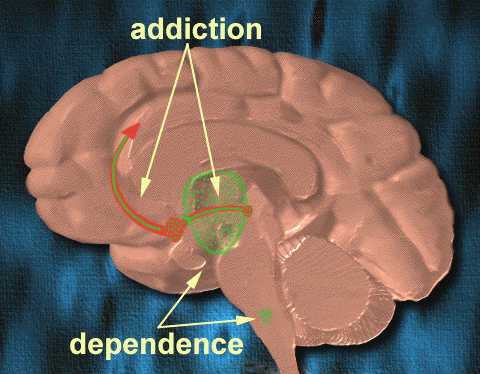 Lee has to write a paper on some of the causes and symptoms of drug abuse for a public health class. He accesses the Web and finds several chat rooms that feature posted questions which are answered by doctors. He uses their answers in his paper, citing just "Internet" as the source. He also finds a site that is put together by the mother of a recovering addict which contains information that she has compiled as a resource for other families in similar circumstances. Steve also uses this information, and since the author of the site does not indicate which books she got the information from, he cites "Internet" again as the source.
Lee has to write a paper on some of the causes and symptoms of drug abuse for a public health class. He accesses the Web and finds several chat rooms that feature posted questions which are answered by doctors. He uses their answers in his paper, citing just "Internet" as the source. He also finds a site that is put together by the mother of a recovering addict which contains information that she has compiled as a resource for other families in similar circumstances. Steve also uses this information, and since the author of the site does not indicate which books she got the information from, he cites "Internet" again as the source.
|
Is this sufficient? Is this a form of plagiarism/academic dishonesty? Why or why not?
Response 1: This is an example of sloppy work that could result in serious consequences. It is important to CORRECTLY cite all sources of information. "Internet" is not a correct citation. It is also dangerous to include information in a research paper that was found on the Web but that can't be verified.
Response 2: It is not plagiarism because he provides a citation, but he does need more information. Most scholars recommend an Internet citation include the specific URL, and the author of the site, and when the site was created. If no dates can be found, then putting down when the site was viewed is sufficient.
Response 3: This is a form of plagiarism. There are several correct ways to cite Internet sources. Students can find information at online sites, such as: http://www.bedfordstmartins.com/online/citex.html, or http://www.apastyle.org/apa-style-help.aspx. If Lee finds it necessary to use the material compiled by the woman who did not cite her resources, at the very least he should quote her directly and cite her as the primary source. I would avoid using her material, however, no matter how good it is. If she obtained it from different resources, chances are he could also search out the original resources she used and cite properly any material directly quoted.
|
[top of page]
Case Study #6: Sharing Thoughts
Jack and Diane are both in business class. Toward the end of the semester, the assignment is to do an analysis of a business plan. The paper is due in a couple of days and due to a family emergency, followed by being in bed all weekend with the flu, Jack hasn't had a chance to work on the paper and is very stressed out. Diane feels badly for Jack and since she has finished her analysis, she offers to loan Jack a copy of her paper so he can look it over to get a sense of how she broke down the assignment and then structured her response, figuring that should help Jack not feel so overwhelmed and make the project manageable. Jack gratefully accepts the offer. Diane sends him her analysis in an e-mail attachment.
|
At this point, is this academic dishonesty? If so, what kind (plagiarism, cheating, etc.) and why?
Response 1: At this point I would say this behavior shows poor judgment on Diane's part, but is not academic dishonesty. It would have been better for Jack to go to the instructor, explain his circumstances, and see if it would be possible to get an extension.
Response 2: I think not, because Diane is showing an example of what she did. In the business world, looking at other examples is called "benchmarking", but it can lead to plagiarism if the author is not careful.
Response 3: No, at this point this is only collaboration. The work of other students, shared by consent, is not plagiarism. What Jack does with this information is what will constitute plagiarism, or not. He can read her material to see how she structured things, but when he applies himself to doing the assignment he must make sure his own work is original within the specifications of the assignment (she may have used formulas or guidelines preset by the instructor, which are fine to reproduce, but the content itself should reflect Jack's own analysis). Here I would recommend that Jack communicate with the professor to see if he can get an extension so he can do a proper job on the analysis. I would also recommend that Jack not use her paper as a reference while he is completing his assignment. It's okay to read it once or twice, but it's better used as a form of research, not a firm guideline to follow. If he were to follow her structure very closely, even though he might choose different words, this would constitute a form of plagiarism in that the work would not be completely his own.
|
As Jack reads over Diane's paper, he agrees with the majority of Diane's analysis, but there are a few things that he would word a bit differently. Jack reasons that since he agrees with Diana's concepts, it would make more sense to make a full copy of Diane's paper and go through it line by line, changing the sentences to sound like him. Occasionally he adds a couple of sentences to expand on a thought. He then creates a cover sheet with only his name on it and turns it in.
|
At this point, is this academic dishonesty? If so, what kind and why?
Response 1: Yes, this is academic dishonesty. Jack is using Diane's work and presenting it as his own.
Response 2: This is done in the business world sometimes, but should be avoided in courses. Because Jack is using Diane's paper as a reference, he has not done his own analysis from scratch. In copyright terms, he is creating a "derivative product" and would need Diane's permission to do so. In academic terms, it will likely cause him problems because he has NOT done the analysis from scratch. In addition, since this will be based on Diane's writing style and organization, the document will more than likely resemble Diane's.
Response 3: Yes, this is academic dishonesty. Jack is bypassing most of the procedures involved in creating an original work and is simply rephrasing parts of Diane's work. This is clearly not his own work and constitutes plagiarism.
|
As Prof. Mellencamp reads through the analysis, he is struck by the similarity between Jack and Diane's papers. In fact, when he compares them, he realizes that they are outlined identically, and in parts, they are worded identically. Even where the wording varies, the concepts are the same.
|
If you were Diane, how could you explain your role in what transpired?
Response 1: By now Diane probably recognized that she put her own academic integrity at risk when she gave her paper to Jack as a reference, even though she didn't intend for him to copy her work. Diane needs to be honest about what she did even though it makes her look like an accomplice.
Response 2: Diane is in a very tough situation. She probably had the best of intentions when sharing her paper, but look at the trouble Jack caused. If this is a first time incident, and she has the e-mails saved, it will help Prof. Mellencamp understand what her intentions were. In the future, Diane might think about sharing general research hints with her friends rather than a finished document.
Response 3: Diane should not necessarily be blamed for sharing her work. Very often, in the workforce, people review material that covers similar subject matter so that they can create original work without "reinventing the wheel" or covering material that has already been detailed. They can get good ideas about what works and what does not work in the final presentation of material. However, it is important with each new project or assignment (whether academic or real-world) to start fresh and customize material each time. Customizing material takes a lot more work than just changing a few words. It takes additional research, as well as rethinking the material and presenting it so that original thoughts, ideas, facts, etc. are conveyed properly. If I were Diane and wanted to show my work to another student I would probably meet them for a little while and let them look over a hardcopy, then take it with me when I left. This way a person can get help, maybe ask some questions, talk over their ideas, but not actually sit down and copy someone else's work. There is value in collaboration, but it is important for people sharing their own work to take some protective measures.
|
[top of page]
Case Study #7: Sharing in Class
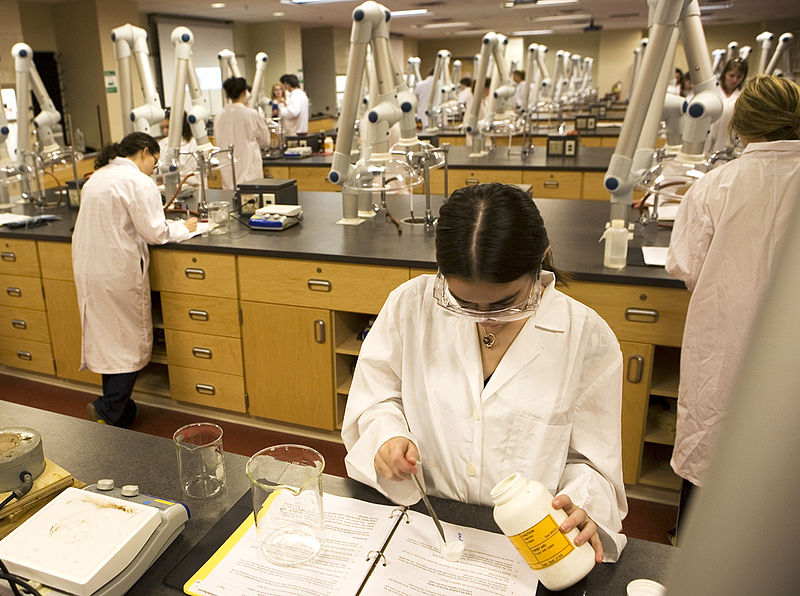 Susan and Lucy are both international students from Narnia and in the same science class. Lucy has a strong grasp of the English language and is doing well in her classes. Susan's grasp of the English language is not nearly as strong as Lucy's. With Lucy's help, she's working hard to expand her standard English vocabulary, plus learn all of the science vocabulary. But Susan is having a hard time retaining the information, most likely because she isn't eating or sleeping well. One day, there is an exam in their science lab. Susan is having a hard time understanding what is being asked in the questions and therefore doesn't know what to put down for the answers. She starts to panic that she'll fail the lab and the class. The TA notices that Susan and Lucy are talking to each other in Narnian and he asks them what they are talking about. Lucy explains that she is only translating the questions for Susan. The TA asks them not to talk and if Susan has questions about the test, then she should bring them to him (the TA). Susan asks him about one of the questions, but the TA can't explain it without giving away the answer, so Susan goes back to her seat, uncertain what to do. Twice more during the exam, he catches Susan and Lucy talking in Narnian. Again, he tells them to stop talking. The TA knows Lucy is a solid student and thinks it is very possible that Lucy is only translating the question and is not providing Susan with the answers, but he isn't sure. He decides to report the situation to the professor who teaches this section.
Susan and Lucy are both international students from Narnia and in the same science class. Lucy has a strong grasp of the English language and is doing well in her classes. Susan's grasp of the English language is not nearly as strong as Lucy's. With Lucy's help, she's working hard to expand her standard English vocabulary, plus learn all of the science vocabulary. But Susan is having a hard time retaining the information, most likely because she isn't eating or sleeping well. One day, there is an exam in their science lab. Susan is having a hard time understanding what is being asked in the questions and therefore doesn't know what to put down for the answers. She starts to panic that she'll fail the lab and the class. The TA notices that Susan and Lucy are talking to each other in Narnian and he asks them what they are talking about. Lucy explains that she is only translating the questions for Susan. The TA asks them not to talk and if Susan has questions about the test, then she should bring them to him (the TA). Susan asks him about one of the questions, but the TA can't explain it without giving away the answer, so Susan goes back to her seat, uncertain what to do. Twice more during the exam, he catches Susan and Lucy talking in Narnian. Again, he tells them to stop talking. The TA knows Lucy is a solid student and thinks it is very possible that Lucy is only translating the question and is not providing Susan with the answers, but he isn't sure. He decides to report the situation to the professor who teaches this section.
|
Is this a case of academic dishonesty? What would you have done if you were in Lucy's place? How could the problem have been solved differently?
Response 1: Lucy put her own grade at risk by not doing as the TA said. Now both she and Susan could receive failing grades on the exam. It would have been better if Lucy and Susan had talked to the professor about Lucy's problems with English well before the exam. The professor might have been able to accommodate Lucy's needs better if he had know there was a problem.
Response 2: This is a very tough situation. I do not believe it was academic dishonesty, but it is a situation that should be avoided because it is so ambiguous. If Susan had a hearing or learning disability, she would be able to ask the Office of Disability services to arrange for extra accommodation. Although lack of English proficiency is not "recognized" as a disability, Susan might still want to speak with her advisor about her problems with English in the class. If this were early in the semester, it might make sense to receive extra tutoring in scientific English.
If I were an instructor, I would re-test Susan, possibly with a Narnian translator present. I would also speak with Lucy, but it would have to be a judgment call as to whether I thought she was being truthful.
Response 3: This is a situation where Lucy has allowed herself to be put into a compromising position. Her reputation is in jeopardy whether or not she is only translating the questions. Susan should have been tested (TOEFL) before being allowed to register for the class to see if she could handle the vocabulary. She also should communicate with the professor early in the duration of the course to make him or her aware of her challenges with the English language and science vocabulary. Early measures can be agreed upon between Susan and the professor so that she can be helped to study and pass the tests. If she cannot qualify properly due to her language problems, she should be directed to take some English language courses.
|
[top of page]
Case Study #8: Using Old Papers
Last semester Ben took an ecology class and one of the papers he wrote was about the effects of DDT on bald eagles. This semester he is taking a wildlife biology class and realizes that his paper from last semester would work for one of the assignments for this semester, too.
|
Is it academic dishonesty for Ben to turn the same paper in twice? What is the best thing for Ben to do in this situation?
 Response 1: Yes, it is dishonest for Ben to just turn in the same paper twice. It would be better if he talked to the professor about the assignment, explained that he has already written a paper, and perhaps propose ideas for further developing the paper that might also satisfy the requirements for the current assignment. Response 1: Yes, it is dishonest for Ben to just turn in the same paper twice. It would be better if he talked to the professor about the assignment, explained that he has already written a paper, and perhaps propose ideas for further developing the paper that might also satisfy the requirements for the current assignment.
Response 2: Penn State policy says approval from an instructor should be gotten first. It is counter intuitive that you would be cheating with your own work, but the point is to make sure you put in a certain level of effort for each course. As an instructor, I would ask to see Ben's paper, and would more than likely require him to do further research to expand on the paper. This would be a great chance for Ben to follow-up more on a topic he was interested in previously.
Response 3: It is common practice for published writers to spend several weeks or months researching a subject and then write several articles on the same subject for publication in a variety of periodicals, using the same base of research material. It is NOT legal to sell the exact same article to more than one publisher unless the party holding the copyright (author) has sold particular rights specifying that the publisher can only publish the article once (reprint rights) and the original copyright holder retains the right to sell the work in its original form to another publisher. Very often a contract will specify a period of time that must pass before the copyright holder can resell the work in this manner.
In this case it is fine for Ben to use the research material he covered in a previous class to complete this assignment. But after completion, the assignment must be unrecognizable from the original paper. It is not okay to hand in the same paper for two different classes, even though the work is original. The purpose of education is to build and use skills, so if a student learns a skill and does not actually use it, but depends on work previously done, the full benefit of the knowledge goes untapped. So a student is really only hurting him- or herself in making this choice. At the very least, Ben can use the research material he used for the original paper again, and perhaps the bibliography, but he should rethink the content, structure, and presentation of concepts completely. It might be safest to choose a completely new subject and start from scratch.
|
[top of page]
Case Study #9: Using Other's Writings
Shawn and Mimi are in the same program with about 40 other students. It is Mimi's first year in the program and Shawn's second year. This year Mimi has an assistantship in the same office where Shawn was an assistant last year. At some point, Mimi finds several papers that Shawn wrote last year on the hard drive of the office computer. She sees that one of the papers matches an assignment coming up soon; an assignment that Mimi sees as being a lot of detail work that she'll never use in the real world. Shawn's paper is well written and so Mimi lifts large sections of it and uses them in her paper. She turns it into the same faculty member who taught the class last year when Shawn took the course.
|
If you were Shawn and the faculty member called you in about the similarity in the papers, what would you say? What would your reaction be to Mimi?
Response 1: The best policy is honesty. Shawn should explain that he didn't give the paper to Mimi and doesn't know where she got it. As Shawn, I would be very angry with Mimi for taking my work and causing problems for me. I would ask her to go to the professor and tell the truth about where she got my paper.
Response 2: If I were Shawn, I would be angry for several reasons. One is Mimi was snooping around in my file space without my permission. Another is that she risked my being accused of academic dishonesty with a project I no doubt put in a lot of time and effort on.
Response 3: If I were Shawn and were called by the faculty member, I would explain that I had not been proactive in securing my files when I left the position Mimi took over. I might also add that I was unaware that she could access these files. If I spoke to Mimi about it, I would let her know that she had compromised my reputation and integrity by using my work without my permission, and suggest that she talk with the professor about it. I would also warn her that this behavior puts her own reputation and integrity in jeopardy.
|
|
What if the faculty member did not notice the text was plagiarized, but one night when you (if you were Shawn), Mimi, and some other people from your program are out socializing, Mimi told you what she had done. How would you react?
Response 1: I would be angry that Mimi had put me in such an awkward position and risked my academic standing by plagiarizing my paper. I would encourage her to go to the professor and confess. If she refused to do so, I would have to in order to stay out of trouble myself.
Response 2: If I found out after the fact, I might not turn Mimi in, but I probably would not trust her in the same way again.
Response 3: I would let Mimi know that this behavior not only compromises her own reputation and integrity, but also whoever might be the original creator of the work (in this case, Shawn). In some cases much more serious consequences can result, such as expulsion from the University. Out in the workforce, the consequences can cost the individual or the corporation the individual works for thousands of dollars in fines and royalty fees and many setbacks. In addition, it jeopardizes the company's status in the marketplace and the integrity of their reputation. In some cases, an individual can even be arrested and jailed.
|
[top of page]
Activity 4: Comparing Answers
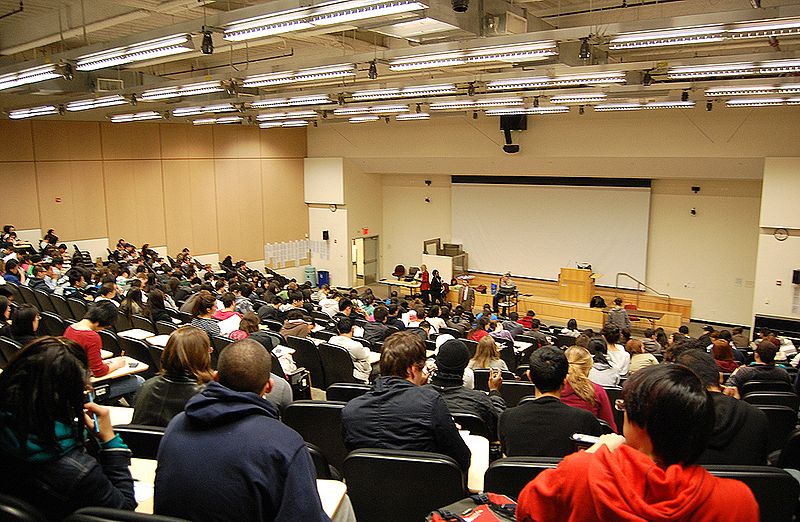
You are in a large, lecture-style class. Because of the size of the class, the tests are all bubble sheets. Because the chairs are bolted down and students need to sit right next to each other, the faculty member has three variations of the test and they are distributed so that students sitting next to each other will not have the same version of the test.
As tests are being handed out, you notice that this one person doesn't take the question sheet on the top, but pulls one out of the stack and then compares it with the person to his left before passing the stack on to the next person in the row. During the test you notice that the way they are positioning their bodies and answer sheets allows these two people to compare answers as they go along.
What would you do?
Show/hide comprehension question...
Used with permission from © Regents of the University of Minnesota, 2001.
The University of Minnesota is an equal opportunity educator and employer.
http://www1.umn.edu/oscai/integrity/faculty/case.html
References
Content
- * American Library Association (2005). Distance Education and the TEACH Act. Retrieved April 8, 2005 from http://www.ala.org/ala/aboutala/offices/wo/woissues/copyrightb/federallegislation/distanceed/distanceeducation.cfm.
- (5) Education World (2003). Applying Fair Use to New Technologies. Retrieved June 3, 2004 from http://www.educationworld.com/a_curr/curr280d.shtml.
- (6) Education World (2003). Copyright Law and New Technologies. Retrieved June 3, 2004 from http://www.educationworld.com/a_curr/curr280c.shtml.
- (4) Education World (2003). Is Fair Use a License to Steal? Retrieved June 3, 2004 from http://www.educationworld.com/a_curr/curr280b.shtml.
- Gasaway, Lolly (2003). When U.S. Works Pass into the Public Domain. Retrieved June 3, 2004 from http://www.unc.edu/~unclng/public-d.htm.
- Information Technology Services (2011). Digital Media FAQ. Retrieved February 1, 2011 from http://its.psu.edu/about/policies/ethical-and-legal-use-of-digital-media/digital-media-faq.
- Journalism Resources (2005). Guide to Citation Style Guides. Retrieved June 3, 2004 from http://bailiwick.lib.uiowa.edu/journalism/cite.html.
- * Looksmart (2005). Academic Cheating. Retrieved April 6, 2005 from http://search.looksmart.com/p/browse/us1/us317836/us317912/us53720/us72125/us947793/.
- * Office of University Relations (2002). Ethical and Legal Use of Digital Media FAQ. Retrieved June 8, 2004 from http://www.psu.edu/computing/policies/digitalmedia/dmfaq.html.
- * Passports (2005). Citation Guides for Writing Papers. Retrieved June 3, 2004 from library.webster.edu/citation.html.
- * Penn State Erie (2004). Position Statement on Academic Integrity. Retrieved June 3, 2004 from www.pserie.psu.edu/faculty/academics/integrity.htm.
- Rutgers-Camden Department of Sociology, Anthropology and Criminal Justice (2005). APA Citation Guidelines and Skills for Papers and Exams. Retrieved June 3, 2004 from http://sociology.camden.rutgers.edu/curriculum/citation.htm.
- (1) Teaching and Learning with Technology (2004). A Statement on Plagiarism and Academic Dishonesty. http://tlt.its.psu.edu/suggestions/cyberplag/cyberplagstudent.html.
- (2) Teaching and Learning with Technology (2004). How to Avoid Plagiarism. Retrieved June 3, 2004 from http://tlt.its.psu.edu/suggestions/cyberplag/cyberplagexamples.html.
- Teaching and Learning with Technology (2004). TEACH Act. Retrieved June 3, 2004 from http://tlt.its.psu.edu/dmd/teachact/.
- (3) Templeton, Brad. A Brief Intro to Copyright. Retrieved June 3, 2004 from http://www.templetons.com/brad/copyright.html.
- Templeton, Brad. 10 Big Myths about Copyright Explained. Retrieved June 3, 2004 from http://www.templetons.com/brad/copymyths.html.
- * Undergraduate Student Government Legal Affairs Department at University Park. June 2005. http://www.clubs.psu.edu/up/usg/legal/info.html.
- * University Faculty Senate Office (2004). 47-00, 48-00, and 49-00 Grades. Retrieved June 3, 2004 from http://ww.psu.edu/ufs/policies/47-00.html#49-20.
- * University Libraries (2002). Citing Your Sources . Retrieved June 3, 2004 from http://www.libraries.psu.edu/instruction/infolit/andyou/mod8/mod8main.htm.
- * University Libraries (2003). Online Reference Resources: Research Guides: Citation and Writing Guides. Retrieved June 3, 2004 from http://www.libraries.psu.edu/psul/researchguides/matbytype/citationstyles.html
* Indicates that the original Website is no longer available.
Image Credits
Arms with Wristwatches
- Source: http://www.flickr.com/photos/ravik694/3771521044/sizes/m/in/photostream/
- This file is licensed under the Attribution-ShareAlike 2.0 Generic (CC BY-SA 2.0).
Minneapolis Skyline
- Source: http://commons.wikimedia.org/wiki/
- File: Minneapolis-skyline-20080123.jpg
- This file is licensed under the Creative Commons Attribution-Share Alike 2.0 Generic license.
The Bratsigovo History Museum
- Source: http://commons.wikimedia.org/wiki/
- File: Bratsigovo-history-museum-art-gallery.jpg
- This file is licensed under the Creative Commons Attribution-Share Alike 3.0 Unported license.
Brain
- Source: http://commons.wikimedia.org/wiki/
- File: Addictiondependence1.gif
- This file is a public domain image.
Science Lab
- Source: http://commons.wikimedia.org/wiki/
- File: StFX_Physical_Sciences_Lab.jpg
- This file is licensed under the Creative Commons CC0 1.0 Universal Public Domain Dedication.
Bald Eagle
- Source: http://commons.wikimedia.org/wiki/
- File: Haliaeetus_leucocephalus2.jpg
- This file is a public domain image.
Lecture Hall
- Source: http://commons.wikimedia.org/wiki/
- File: 5th_Floor_Lecture_Hall.jpg
- This file is licensed under the Creative Commons Attribution-Share Alike 3.0 Unported license.
Summary
Academic dishonesty isn't a victimless act. It affects not only the people immediately involved, but also the entire academic community. Students who commit academic dishonesty damage the reputation of the academic institution in addition to their own reputations and possibly the reputations of their friends.
Acts of academic dishonesty are acts which violate the University's Code of Conduct. These include (but are not limited to) plagiarism, cheating, and copyright violations.
There is a University policy known as G-9 which provides direction for responding to academic integrity violations of the University's Code of Conduct. In addition, each college and campus has designed specific guidelines for responding to allegations and have the authority to impose sanctions on students who violate the academic integrity policy. The outcome of all academic integrity cases is sent to the Office of Student Conduct for record-keeping. All sanctions are recorded in the student's file. A student who has a history of academic integrity violations may receive more severe sanctions as a result of repeated misconduct.
Students often rationalize academic dishonesty with a wide array of excuses - none of which are valid justification for being dishonest. Taking time while you are at Penn State to develop your personal philosophy of integrity will be time well spent.
Instructor's Guide
Quizzes, Reflective Questions and Activities
This tutorial on Academic Integrity, Plagiarism, and Copyright is applicable to all Penn State courses and helps to fulfill the instructor's obligation to address the topic of academic integrity. Because the content of this tutorial is very comprehensive, you may want to pick and choose sections for your students to complete, depending on the content of your course. If you are using this tutorial to ensure the students in your class are well informed about Penn State's policy on Academic Integrity, you may wish to assign the tutorial as work to be done outside of class, or even as work to be completed before the semester begins.
If you are planning to use the plagiarism detection tool "Turnitin.com" in your course, we recommend that you have your students work through this tutorial first to be sure they understand what plagiarism is and the consequences of being caught plagiarizing. More information about "Turnitin.com" is available at http://tlt.its.psu.edu/turnitin.
The following assignments are embedded in the Academic Integrity tutorial:
- Activity 1: Quiz - Plagiarism and Cheating
- Activity 2: Quiz - Copyright and Fair Use
- Activity 3: Quiz - Excuses and Penalties
- Activity 4: Activity - Case Study Situation
Relationship to Other iStudy Tutorials
This tutorial is directly related to the Search Strategies and Source Evaluation tutorial. Many of the strategies illustrated here are used when one is accessing information.
Suggested In-class Methods of Presentation
Many faculty members are increasingly frustrated by students' academic integrity violations and by the long and stressful process that they must go through to correct, prove, and/or penalize these violations. What can we do, then, to try to raise awareness among students and to find ways to make violations less likely?
What follows is a collection of suggestions for staff and faculty (both authors and instructors) on how to design and run courses to discourage academic integrity violations and to encourage proper research methods and student learning.
Suggestions on How to Encourage Academic Integrity and Discourage Plagiarism and Cheating
compiled by
Ian W. Riddell—Instructional Materials Designer
Penn State World Campus
February 2003
Below you will find a collection of suggestions for designers, authors, and instructors of courses. These pages suggest ways to help build courses to lead students away from temptation; both through raising their awareness of how to do proper research and writing and through designing assignments to make it more difficult for them to cheat.
What follows is an amalgamation and adaptation of material from several sources:
Colyer, Anita. 2001. "13 Design tips to foster academic honesty". E-mail summary of discussion at February 2001 Instructional Design and Development "open mic" session. [Colyer]
PSU Libraries. 2002. "Information literacy and you." A modular, on-line course in beginning research methods. [LIAS]
PSU Teaching and Learning with Technology. 2001. Cyber-plagiarism: Detection and prevention. Web site: http://tlt.its.psu.edu/plagiarism/facguide. [TLT]
Harris, Robert. 2002. Virtual Salt: Anti-plagiarism: Strategies for research papers. Web site: http://www.virtualsalt.com/antiplag.htm. Site adapted from: Harris, Robert. 2001. The plagiarism handbook. Los Angeles: Pyrczak Publishing.) [Harris]
Note:These suggestions have been categorized into sections for course designers, authors, and instructors, but they may be useful to all three groups and to students as well.
Course Designers
- Include a statement in the course syllabus about academic integrity policies. What is academic dishonesty? What are some examples? How will it be addressed? What are the possible bad outcomes for the student? Academic dishonesty cases can range from cheating on exams, sharing answers on lesson assignments, falsifying data, copying another student's work, downloading papers written by other individuals from a Web site, plagiarizing from textbooks or articles, and many more! [Colyer]
- Link to the appropriate college info, if available. Many individual colleges have their own specific forms and procedures that are to be used. [Colyer]
- Identify courses at risk. Undergraduate general education courses with high enrollments typically draw from a large pool of on-campus students, for whom it is easier to exchange information or answers for a particular course's assignments or exams. Tests and exams that use multiple-choice questions are more easily "cheatable." Writing-intensive courses (or even undergrad courses with lots of essay assignments) are more likely to foster plagiarism problems. [Colyer]
- In cases where collaborative assignments are included in a course, clearly define processes, structure and purview of "group" feedback, and expected outcomes. Will the outcome of the group's work be a single paper with all three students' names on it? or individual papers submitted by each of the three individual students? Be clear in stating how any such collaboration will be evaluated. As a part of such activities, it is also a good idea to have each student (near the end of the process) provide an assessment of what s/he contributed and what s/he perceived that other team members contributed. [Colyer]
Authors:
- Even in lower-level undergraduate courses, teach students how to cite material that they did not generate themselves. Mention use of quotation marks or indentation of blocks of text, teach students the formal citation style of the course's discipline area, or identify an informal style a student can use (for example, "from Ember and Ember text, page 14"). [Colyer]
- Explain to students how proper citation of sources increases the caliber of their writing. Citation strengthens their writing by forcing them to be clear when presenting arguments and counter-arguments. It shows their instructor that they have put time, effort, and thought into the assignment. And it allows them to be engaged in "the great conversation" carried on by academic thinkers. [Harris]
- Make your assignments specific. Don't just ask students to write a paper about "Hamlet" or "The Electoral College." Use specific instructions like "Discuss how Shakespeare used flowers in Hamlet to signify rites of passage. Be sure to reference the deaths of Ophelia and Rozencrantz and Guildenstern" or "Discuss proposals to amend the process of electing presidents. Should the Electoral College be abolished? Be sure to reference opinions from your local news media as well as national media." This may eliminate the possibility that students can find complete papers to copy and will force them to assimilate materials from several sources. [TLT]
- Provide specific details regarding expectations of student's assignments, such as the structure of response and how much time an assignment might take. Identify any time-consuming assignments or long papers in advance so the student can plan "extra" time for specific lessons. [Colyer/TLT]
- Require students to use specific resources in their research: sources published in the past year, personal interviews, specific articles or book chapters. Be clear about the types of sources you would like the students to use: only one Web reference, two articles from the course readings booklet, no more than one article 5 or more years old, one article from a specific journal. This guides the students to appropriate research and can show them the breadth of materials available in the field. [Harris]
- For courses that have papers, require multiple points of interaction. Students can submit in steps: identify topic, provide outline, provide list of sources, provide rough draft, submit final paper, submit revisions based on instructor input. This is good instructional design, too! Breaking an "intimidating" writing assignment up into steps helps the adult learner—who may have some writing anxiety—accomplish the task in subsets of more manageable small steps. [Colyer/TLT]
- Ask your students to submit their research notes. This will encourage them to keep neat and accurate notes as they work and will allow you to guide them toward better notetaking if they have problems citing their research. [TLT]
- Ask students to submit a "meta-learning essay." What did they learn while they worked on this research? How has their view of the subject changed? What was challenging about the work?
- Include a variety of assessments, not just multiple choice. It might be a good idea to include several assessments that require written responses. [Colyer]
- Describe the research/writing process to your students. Encourage your students to work through "Information Literacy Badges at Penn State" (http://sites.psu.edu/informationliteracybadges/), which outlines the research method and gives students guidelines for evaluating sources. This is especially helpful in lower-level courses where students may have little experience doing research and writing college essays.
- Make assignments as unique to the student as possible. Ask them to include personal or family history, current or local issues, and personal reflection into the work they submit to you. This requires more thought and effort than just reiterating concepts and definitions and allows you to get to know them better, which aids in your working relationship with them. It also allows you to learn their writing style. [TLT]
- Avoid multiple-choice and fill-in-the-blank questions on tests and exams. These are the easiest types of exams to cheat on. These questions also require less understanding and synthesis on the part of students. With essay answers you can be sure of their comprehension and will also be able to compare these exams with other writing the student has submitted. [TLT]
- Set an example. When you write your syllabus materials be sure to properly cite your references and provide students with bibliographies/lists of references—either in each lesson or at the end of the course. This will provide the student with a model for the expected style and procedure for citation and shows that the University's policies and mission apply to the entire academic community.
Instructors:
- If you feel you need to use a "plagiarism detection" Web site (i.e., Turnitin.psu.edu), make sure you warn students in advance that such avenues will be used in exploration of suspected academic dishonesty cases. [Colyer]
- Be prepared with resources for the student who asks for aid in avoiding plagiarism and other forms of academic dishonesty. Have some idea ahead of time how you would describe procedures for citation and paraphrasing in your discipline. Refer them to the appropriate style/publication manual for your discipline.
- Be aware of warning signs or clues about academic integrity violations (the following are fleshed out on Harris's Web site):
- Mixed citation style
- Lack of references or quotes
- Unusual formatting
- Off-topic paper
- Datedness of resources or ideas
- Anachronisms
- Anomalies of diction and style (mixed levels or writing, too-complex vocabulary, etc.) [Harris]
Key Points
Integrity is a moral value that resides in the affective domain. Therefore, the best way to help students develop integrity is by presenting the relevant information and then giving them opportunities to apply it to various situations through conscious thought and discussion. A primary goal of this tutorial is to encourage students to develop a personal philosophy of academic integrity based on Penn State principles.
This tutorial begins with a description of academic integrity and the policies at Penn State, followed by information about plagiarism, cheating, copyright, fair use, excuses students use, and penalties for academic dishonesty. The content has been broken into topics to allow instructional flexibility. Instructors can use the entire tutorial, or select just the topics they want to cover. Quizzes present various situations for students to evaluate. The final activity is a series of situations the students are asked to evaluate and respond to. The final activity would also work well for small group discussions or as discussion board topics using an electronic message board. Instructors may wish to add additional or different responses to the final activity, depending on their course content.
The key points to make on this topic are that academic dishonesty affects the student as well as the entire community, ignorance isn't an acceptable excuse for committing academic dishonesty, and academic dishonesty has consequences.
Assessment Criteria
The following assessment criteria was used in developing this tutorial and may be useful to instructors in evaluating student performance.
Assessment Criteria
|
Where
|
Domain
|
Activities
|
%
|
|
Content of iStudy Tutorial
|
Knowledge
|
The student can define academic integrity, cheating, plagiarism, copyright, and fair use.
|
|
|
Activities in iStudy Tutorial
|
Comprehension
|
The student can identify instances of cheating, plagiarism, and copyright violation.
|
|
|
Activities in iStudy Tutorial
|
Application
|
The student can apply copyright rules to a situation to determine if use of the materials is OK or not.
|
|
|
Case Study Activity
|
Synthesis
|
The student can develop his/her own philosophy of academic integrity based on the Penn State principles.
|
|
|
|
|
|
100%
|
 Academic integrity affects everyone at Penn State, whether you are a student, a professor, an instructor, or a staff member. It is everyone's responsibility to know what the Penn State policy on Academic Integrity says. Every member of the Penn State community is also expected to understand what plagiarism is as well as current copyright laws and how they apply to each person's work. This tutorial provides an introduction to academic integrity, plagiarism, and copyright, and additional resources for obtaining more information.
Academic integrity affects everyone at Penn State, whether you are a student, a professor, an instructor, or a staff member. It is everyone's responsibility to know what the Penn State policy on Academic Integrity says. Every member of the Penn State community is also expected to understand what plagiarism is as well as current copyright laws and how they apply to each person's work. This tutorial provides an introduction to academic integrity, plagiarism, and copyright, and additional resources for obtaining more information.
















 Sage : I am; I've got other assignments to finish before the semester is over.
Sage : I am; I've got other assignments to finish before the semester is over.
 Brian : We've got all the basic information we need, but I think we could jazz up our presentation by having the students take a survey in class. I found a survey on line that we could use. You're supposed to pay for the surveys, but they cost $1.00 each. We can just make copies on my dad's copier.
Brian : We've got all the basic information we need, but I think we could jazz up our presentation by having the students take a survey in class. I found a survey on line that we could use. You're supposed to pay for the surveys, but they cost $1.00 each. We can just make copies on my dad's copier.
 Maybe you think you have too many credits or are working too many hours to be able to complete your assignments. However, it is your responsibility to make sure you have scheduled adequate time to complete all your assignments.
Maybe you think you have too many credits or are working too many hours to be able to complete your assignments. However, it is your responsibility to make sure you have scheduled adequate time to complete all your assignments. David is a senior and only has three more classes this semester before he graduates. He feels the pressure to uphold his 3.65 GPA, as well as just wanting to finish and get the classes out of the way.
David is a senior and only has three more classes this semester before he graduates. He feels the pressure to uphold his 3.65 GPA, as well as just wanting to finish and get the classes out of the way. Janie has just moved to the Twin Cities from a non-English speaking country. It is hard to fit in, understand the language, and make friends. She misses her family and it is sometimes difficult for her to concentrate on all her classes.
Janie has just moved to the Twin Cities from a non-English speaking country. It is hard to fit in, understand the language, and make friends. She misses her family and it is sometimes difficult for her to concentrate on all her classes. Jennifer really enjoys the art history class she is taking this semester. She spends a lot of time on her final project - a portfolio of works of art that she selects, writes a brief background about the artist, and then describes what she feels about the piece. She is careful to make sure all her information about the artists is correct, and reads several essays on the artists she has chosen. She agrees with most of what the essayists have to say regarding the pieces. She represents some of their thoughts in her project as her own, reasoning that since it is not fact, and instead intangible opinion, and because she agrees with them, then she is not plagiarizing.
Jennifer really enjoys the art history class she is taking this semester. She spends a lot of time on her final project - a portfolio of works of art that she selects, writes a brief background about the artist, and then describes what she feels about the piece. She is careful to make sure all her information about the artists is correct, and reads several essays on the artists she has chosen. She agrees with most of what the essayists have to say regarding the pieces. She represents some of their thoughts in her project as her own, reasoning that since it is not fact, and instead intangible opinion, and because she agrees with them, then she is not plagiarizing. Lee has to write a paper on some of the causes and symptoms of drug abuse for a public health class. He accesses the Web and finds several chat rooms that feature posted questions which are answered by doctors. He uses their answers in his paper, citing just "Internet" as the source. He also finds a site that is put together by the mother of a recovering addict which contains information that she has compiled as a resource for other families in similar circumstances. Steve also uses this information, and since the author of the site does not indicate which books she got the information from, he cites "Internet" again as the source.
Lee has to write a paper on some of the causes and symptoms of drug abuse for a public health class. He accesses the Web and finds several chat rooms that feature posted questions which are answered by doctors. He uses their answers in his paper, citing just "Internet" as the source. He also finds a site that is put together by the mother of a recovering addict which contains information that she has compiled as a resource for other families in similar circumstances. Steve also uses this information, and since the author of the site does not indicate which books she got the information from, he cites "Internet" again as the source. Susan and Lucy are both international students from Narnia and in the same science class. Lucy has a strong grasp of the English language and is doing well in her classes. Susan's grasp of the English language is not nearly as strong as Lucy's. With Lucy's help, she's working hard to expand her standard English vocabulary, plus learn all of the science vocabulary. But Susan is having a hard time retaining the information, most likely because she isn't eating or sleeping well. One day, there is an exam in their science lab. Susan is having a hard time understanding what is being asked in the questions and therefore doesn't know what to put down for the answers. She starts to panic that she'll fail the lab and the class. The TA notices that Susan and Lucy are talking to each other in Narnian and he asks them what they are talking about. Lucy explains that she is only translating the questions for Susan. The TA asks them not to talk and if Susan has questions about the test, then she should bring them to him (the TA). Susan asks him about one of the questions, but the TA can't explain it without giving away the answer, so Susan goes back to her seat, uncertain what to do. Twice more during the exam, he catches Susan and Lucy talking in Narnian. Again, he tells them to stop talking. The TA knows Lucy is a solid student and thinks it is very possible that Lucy is only translating the question and is not providing Susan with the answers, but he isn't sure. He decides to report the situation to the professor who teaches this section.
Susan and Lucy are both international students from Narnia and in the same science class. Lucy has a strong grasp of the English language and is doing well in her classes. Susan's grasp of the English language is not nearly as strong as Lucy's. With Lucy's help, she's working hard to expand her standard English vocabulary, plus learn all of the science vocabulary. But Susan is having a hard time retaining the information, most likely because she isn't eating or sleeping well. One day, there is an exam in their science lab. Susan is having a hard time understanding what is being asked in the questions and therefore doesn't know what to put down for the answers. She starts to panic that she'll fail the lab and the class. The TA notices that Susan and Lucy are talking to each other in Narnian and he asks them what they are talking about. Lucy explains that she is only translating the questions for Susan. The TA asks them not to talk and if Susan has questions about the test, then she should bring them to him (the TA). Susan asks him about one of the questions, but the TA can't explain it without giving away the answer, so Susan goes back to her seat, uncertain what to do. Twice more during the exam, he catches Susan and Lucy talking in Narnian. Again, he tells them to stop talking. The TA knows Lucy is a solid student and thinks it is very possible that Lucy is only translating the question and is not providing Susan with the answers, but he isn't sure. He decides to report the situation to the professor who teaches this section. Response 1: Yes, it is dishonest for Ben to just turn in the same paper twice. It would be better if he talked to the professor about the assignment, explained that he has already written a paper, and perhaps propose ideas for further developing the paper that might also satisfy the requirements for the current assignment.
Response 1: Yes, it is dishonest for Ben to just turn in the same paper twice. It would be better if he talked to the professor about the assignment, explained that he has already written a paper, and perhaps propose ideas for further developing the paper that might also satisfy the requirements for the current assignment.